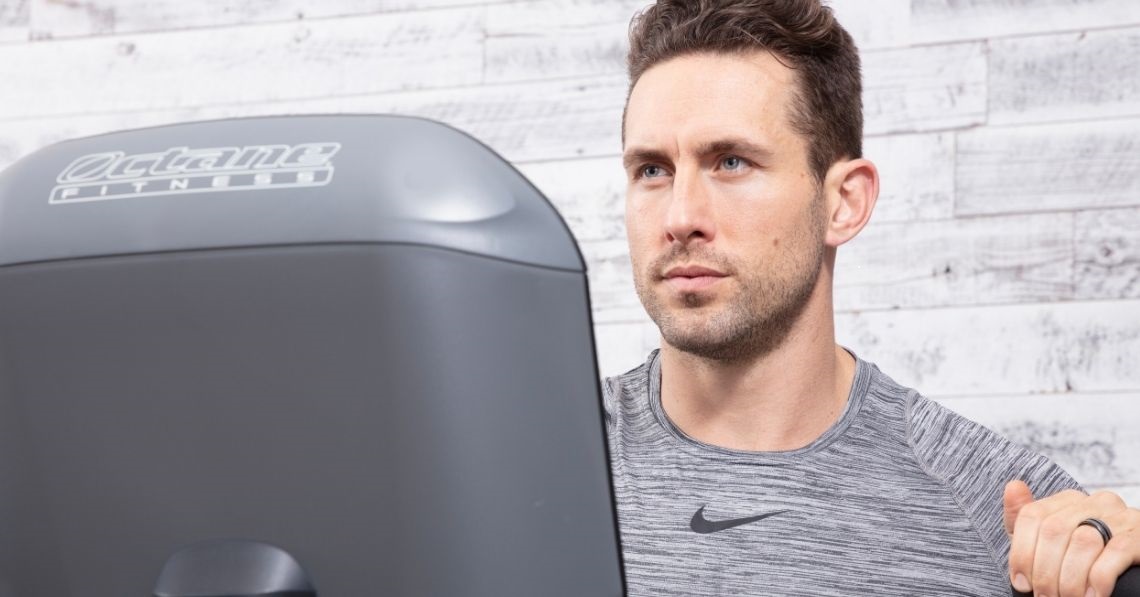 If you’ve exercised anywhere in the past few years, chances are, you’ve taken on high-intensity interval training, or HIIT.
If you’ve exercised anywhere in the past few years, chances are, you’ve taken on high-intensity interval training, or HIIT.
HIIT is everywhere, with no signs of losing steam. A popular form of cardiovascular exercise, HIIT combines short, rigorous bursts with timed active recovery periods to boost stamina. The high-intensity intervals are anaerobic, or all-out, efforts, while the recovery is performed at a steady-state cardio pace. Think sprinting for 20 seconds, then jogging for 40 seconds, and repeat.
Other than that basic structure, HIIT affords significant freedom in execution, from the types of exercises, the timing of the intervals and the overall workout duration. You can add valuable variety in your workouts with different HIIT configurations, which can help boost motivation and results. However, for safety, effectiveness and best practices, keep in mind the following dos and don’ts of HIIT.
Dos and Don’ts of HIIT
Dos
- Do participate in this exercise modality regularly, as it boosts cardiovascular conditioning, burns a lot of calories and helps increase metabolism.
- Do embrace shorter sessions of 20-45 minutes, and no more than 60, for best performance and to reduce the risk of overtraining.
- Do concentrate on proper form, which always trumps speed. First master the exercise movement; then work on increasing your pace. And do the modifications if you can’t maintain proper technique or if the exercises are too rigorous.
- Do take advantage of built-in HIIT programs on cardio machines, like ellipticals, stationary bikes and treadmills, where you simply hit a few buttons and get started.
- Do wear a heart rate monitor to keep track of your intensity, and know your target numbers. Maximum heart rate is 220-your age, and you should aim for 85-90% of this number for high-intensity intervals, and 65-80% for active recovery. Monitoring these numbers gives you real-time, objective feedback indicating whether you need to increase, decrease or maintain your exertion level.
- Do incorporate variety by participating in a HIIT class online or at the gym; creating your own HIIT session while jogging or biking or working with a personal trainer for custom routines.
- Do maintain a positive, can-do attitude for best performance. Grunting and minor complaining are allowed, but quit thinking you can’t do this. The body achieves what the mind believes.
- That said, do know when to stop if necessary. If you have sharp pain, fall or can’t catch your breath, don’t risk injury by pushing through. Know your body, and if something feels wrong, take a break.
Don’ts
- Don’t perform HIIT if you haven’t exercised in a long time or are a beginning exerciser. First build a base level of fitness for approximately 6-8 weeks before submitting yourself to the challenges of HIIT. And if you’re over 50, it’s smart to first get your doctor’s clearance for these intense workouts.
- Don’t dog it. HIIT means you must give it all you’ve got, every time. So you should definitely be uncomfortable.
- Don’t use the wrong weights. If the resistance is too heavy, your form will suffer and you could get injured. If it’s too light, you won’t see results.
- Don’t skip the warm-up or cooldown. Ever. HIIT is hard, and you need to prepare your body for the challenge instead of jumping right in and shocking the system. At the end of the workout, a cooldown reduces the body’s exertion level and gradually returns it to a resting level, which promotes recovery and helps prevent light-headedness and dizziness.
- Don’t do HIIT every day, which can lead to overtraining or overuse injuries. Choose HIIT 1-3 times each week, and alternate with lower intensity cardio, strength, or yoga and Pilates sessions.